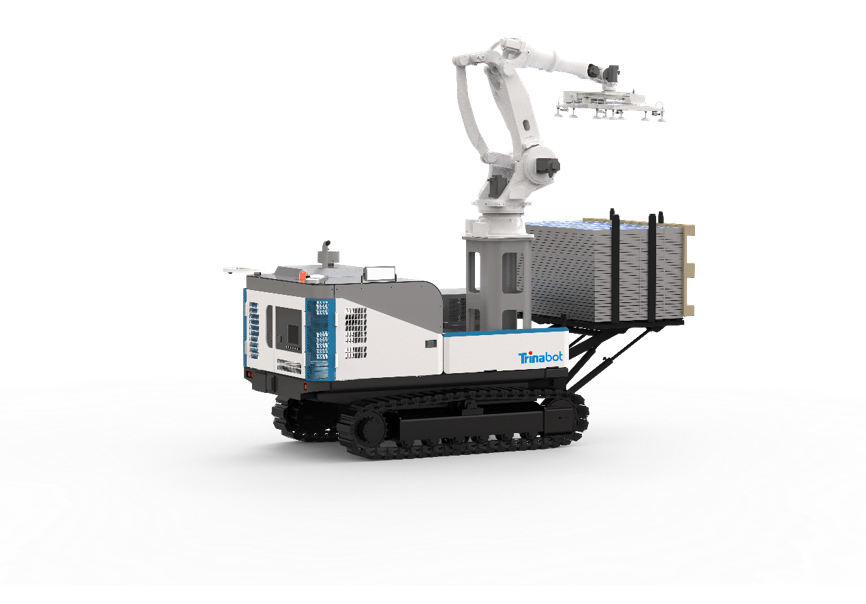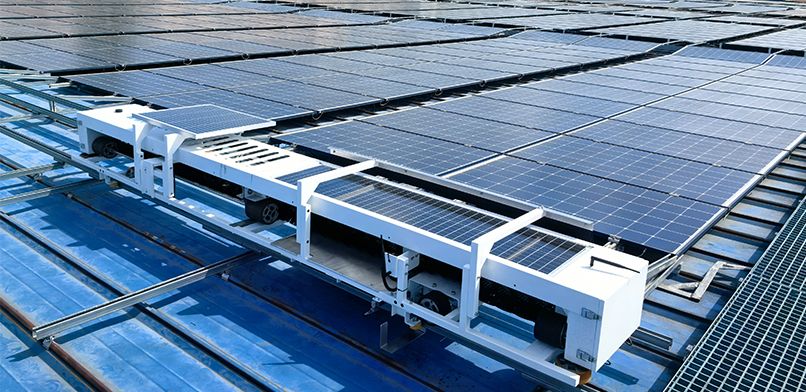The global solar energy market is experiencing rapid growth, driven by the urgent need for renewable energy, government incentives, and the push toward carbon neutrality. According to industry reports, solar capacity is expected to expand significantly in the Middle East, Europe, and Asia over the next decade. As solar projects scale up, traditional manual installation methods for photovoltaic (PV) modules are becoming a bottleneck, limiting efficiency, increasing labor costs, and raising safety risks.
To meet these challenges, PV module installation robots are emerging as a game-changing solution, enabling automated solar installation, higher project efficiency, and safer work environments. PV module installation robots enable solar developers, EPC contractors, and energy companies to automate installation processes, improve consistency, and accelerate project timelines.
What Is a PV Module Installation Robot?
A PV module installation robot is an automated system designed to handle the precise placement, alignment, and mounting of photovoltaic (PV) panels on mounting structures. Equipped with robotic arms, sensors, and intelligent control systems, these robots replicate human installation tasks with higher speed, accuracy, and consistency.
Modern Pv Installation Robots Often Feature:
● Automated module pickup and placement
● Laser-guided alignment and positioning
● Real-time obstacle detection and avoidance
● Integration with solar plant layout and project management software
By combining mechanical precision with intelligent control, PV installation robots enable solar projects to achieve consistent quality, reduced errors, and faster deployment.
How PV Module Installation Robots Work
PV installation robots operate through a combination of mechanical, electrical, and software systems:
1. Scanning and Layout Mapping: Robots map the installation site using sensors or preloaded site plans.
2. Module Handling: Robotic arms or gantry systems pick up panels from storage racks, ensuring safe handling without damage.
3. Placement and Mounting: The robot positions each panel accurately onto mounting structures, aligning with the required tilt and orientation.
4. Fastening and Verification: Some robots integrate fastening tools or sensors to verify proper installation.
5. Data Feedback and Reporting: Installation progress and quality metrics are logged for project monitoring and O&M planning.
This automation significantly reduces manual labor intensity while maintaining high precision and uniformity across large-scale solar installations.
PV Module Installation Robots vs Traditional Methods
| Feature / Aspect | Traditional Manual Installation | PV Module Installation Robot |
| Installation Speed | Moderate, dependent on workforce and skill | High, continuous operation with consistent speed |
| Labor Requirement | Large workforce required | Minimal supervision, fewer workers needed |
| Safety | Higher risk of accidents, injuries, and heat exposure | Enhanced safety, robot handles panels in high or hazardous locations |
| Installation Accuracy | Variable, prone to misalignment or uneven spacing | High precision, consistent alignment and tilt |
| Rework / Errors | Often requires rework due to human error | Minimal errors, reduced rework and panel damage |
| Operational Cost | Labor-intensive, higher long-term cost | Lower long-term cost due to reduced labor and faster completion |
| Environmental Adaptability | Limited, affected by heat, dust, or uneven terrain | Can operate in harsh conditions with temperature and dust-resistant design |
| Scalability | Challenging for large-scale projects | Easily scalable across multiple sites and large PV arrays |
| Data & Monitoring | Limited tracking of progress or quality | Real-time data on installation progress, alignment, and site conditions |
| Energy Yield Impact | Misalignment reduces efficiency | Optimized alignment maximizes energy generation |
Applications of PV Module Installation Robots
PV module installation robots are widely used in:
● Utility-scale solar farms: Large ground-mounted solar arrays benefit from faster installation and consistent panel alignment.
● Rooftop PV projects: Robotic systems can navigate complex roof layouts with minimal human intervention.
● Solar EPC contractors: Automation helps contractors meet tight deadlines and improve operational efficiency.
● Renewable energy research and development: Facilitates testing of installation processes and innovative solar mounting solutions.
Benefits and Advantages
Using PV module installation robots provides multiple advantages:
1. Increased Efficiency
Robots can work continuously, significantly reducing installation time compared to manual labor. Large-scale PV projects can be completed faster, enabling quicker energy generation and ROI.
2. Enhanced Safety
By automating panel handling in high, uneven, or hazardous environments, robots reduce the risk of worker injuries, especially in hot, high-altitude, or complex terrains.
3. Consistent Quality and Precision
Robotic systems ensure uniform panel alignment, tilt, and spacing, minimizing shading losses and maximizing energy yield.
4. Cost Reduction
Fewer manual labor hours, reduced rework, and decreased panel damage contribute to lower installation costs over the project lifecycle.
5. Scalability and Flexibility
PV module installation robots can be deployed across multiple sites and adapted to different module sizes, mounting structures, and environmental conditions, supporting scalable solar deployment.
6. Data-Driven Insights
Integrated sensors and software provide real-time data on installation progress, alignment accuracy, and environmental conditions, supporting better project management and future maintenance planning.
Future Outlook
As the solar industry expands and automation technologies advance, PV module installation robots are expected to become standard equipment for large-scale and high-value solar projects. The combination of AI-driven robotics, IoT integration, and smart site management will further optimize installation efficiency, cost, and safety.
Companies investing in PV module installation robots position themselves at the forefront of renewable energy automation, enabling faster deployment, improved energy yields, and sustainable growth. Contact us today to explore intelligent automation systems and customize a strategy for your next solar farm.





